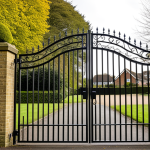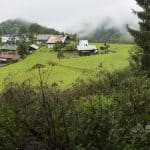The steady creep of urbanization into traditional green spaces and the increasing prevalence of drought in many regions are causing serious concern for water conservation. Water is a precious resource, and its efficient use in urban landscapes is paramount. For scholars and researchers, the challenge is to identify and implement techniques that can help save water while keeping the landscape lush and beautiful. From plant choices to irrigation systems, several strategies can be used to reduce water consumption in arid urban landscapes.
The Importance of Choosing the Right Plants
When it comes to landscaping, your choice of plants can greatly influence the amount of water needed to maintain them. Water-efficient plants, often native species, are adapted to thrive in the local climate and soil conditions. They can significantly reduce your landscape’s water needs.
Also to see : Essential facilities management services for UK businesses
Plant selection is a scholarly task that requires deep understanding of the local ecosystem. You can find numerous academic journals and articles online that provide detailed information about native and drought-tolerant plants suitable for your area. A quick Google search will lead you to resources that guide you on the best plant choices for water conservation.
For instance, succulents, grasses, and certain types of shrubs are often ideal for arid conditions because they require less water. They have developed strategies to survive in drought-like conditions, such as deep-root systems, wax-coated leaves, and other physiological adaptations. With the right plants, you’ll not only conserve water but also create a verdant and vibrant landscape that’s in harmony with its environment.
Also to see : How to Stay Informed About Global News and Events in a Digital Age?
Adopting Efficient Irrigation Systems
The way you water your plants is as crucial as what you plant. Traditional watering methods often lead to water wastage through evaporation, runoff, or overwatering. Adopting more efficient irrigation systems is a smart move to conserve water in arid urban landscapes.
One such system is drip irrigation, which delivers water directly to the plant’s roots. This method can significantly reduce water wastage as it minimizes evaporation and runoff, and it ensures that the water goes exactly where it’s needed.
Another efficient system is the soaker hose, which is laid along the ground and releases water directly into the soil. It’s a simple yet effective technique for watering plants without wasting water.
Smart irrigation controllers are also gaining popularity in urban landscapes. These devices use weather data and soil moisture information to automatically adjust watering schedules and amounts, thus ensuring water efficiency.
Understanding the Role of Soil in Water Conservation
Soil plays an integral role in water conservation. It’s the medium in which plants grow and it’s responsible for storing and supplying water to them. Therefore, understanding and improving soil health can lead to better water conservation in your landscape.
A well-structured soil can store more water and reduce the need for frequent watering. Organic matter such as compost, manure, or mulch can improve soil structure, increase its water-holding capacity, and reduce evaporation. It’s also essential to avoid soil compaction as it can impede water infiltration and lead to water runoff.
Smart landscaping techniques such as contouring and terracing can also help manage water more effectively. They can slow down water movement, increase infiltration, and reduce runoff, thus promoting efficient water use.
Designing Landscape with Water Conservation in Mind
Good landscaping design is crucial for water conservation. Designing your landscape with water efficiency in mind is a great way to reduce water usage while achieving a beautiful landscape.
Incorporating rain gardens and bioswales into your landscape design can help capture rainwater and allow it to infiltrate the soil rather than being lost as runoff. These features not only conserve water but also add a unique aesthetic element to the landscape.
Moreover, using permeable paving materials for driveways, sidewalks, and patios can also help conserve water. They allow rainwater to seep through and replenish the groundwater, reducing the need for additional watering.
Lastly, grouping plants with similar water needs together (hydrozoning) can also improve water efficiency. It allows for a more targeted irrigation, preventing overwatering of some plants while under-watering others.
Education and Awareness for Water Conservation
To achieve significant water conservation, it’s essential to raise awareness and educate the public about the importance of water efficiency. People need to understand the value of water, the implications of water wastage, and the effective ways to conserve it in their landscapes.
Workshops, seminars, and awareness campaigns are excellent avenues to disseminate information about water-saving techniques. Digital platforms can also be leveraged to provide resources, guides, and tips for water conservation.
The bottom line is, water conservation in arid urban landscapes is a collective responsibility. By making informed choices about plant selection, irrigation systems, soil management, and landscape design, and by fostering a culture of water efficiency, we can significantly reduce water consumption and protect our precious resource.
Incorporating Rainwater Harvesting Systems
Incorporating rainwater harvesting systems into an urban landscape design is an excellent way to conserve water. These systems collect and store rainwater for later use, reducing the need to draw from municipal water supplies, thereby easing water demand.
Rainwater is a renewable and sustainable source of water that can significantly reduce water consumption in arid urban landscapes. It’s ideal for irrigation, as it’s free of chlorine and other chemicals found in tap water, which can hinder plant growth.
There are several rainwater harvesting systems available, ranging from simple rain barrels to more complex underground cisterns. The selection of a system depends on the volume of water needed, the available space, and the scale of the landscape. For instance, rain barrels are perfect for small gardens, while cisterns are suitable for larger landscapes.
Rainwater harvesting systems can be integrated into the landscape design in a visually appealing way. For example, some systems use decorative elements like waterfalls or fountains, turning a practical water-saving feature into a beautiful focal point.
It’s important to note that local regulations may govern the use of rainwater harvesting systems, so it’s wise to check the local laws before installation.
Implementing Smart Watering Practices
Smart watering practices are key to water conservation in arid urban landscapes. The goal is to deliver the right amount of water at the right time, reducing water usage while ensuring healthy plant growth.
One effective smart watering practice is watering during the cooler parts of the day, typically early morning or late evening. This minimizes evaporation and ensures more water soaks into the ground, reaching the plant roots.
Another practice is to water deeply, but less frequently. This encourages plants to develop deep root systems, making them more resilient to drought conditions. Deep watering also prevents the wastage of water that occurs when watering superficially and frequently.
Using a soil moisture sensor is another smart practice. These devices measure the amount of moisture in the soil and can help determine when it’s time to water. This can prevent both overwatering and underwatering, optimizing water usage in the landscape.
Conclusion
Water conservation in arid urban landscapes is crucial in our changing world. As urbanization and climate change continue to present challenges, implementing water-saving techniques becomes not just a choice, but a necessity.
Choosing the right plants, adopting efficient irrigation systems, understanding the importance of soil health, designing landscapes with water conservation in mind, incorporating rainwater harvesting systems, and implementing smart watering practices are all proven strategies to conserve water.
Raising awareness and educating the public about these techniques is also important. As individuals make informed decisions and become part of the solution, we can collectively reduce water consumption, meeting our needs while protecting this valuable resource for future generations.
By embracing these strategies, we can create lush, beautiful urban landscapes that are in harmony with their arid environment, proving that it’s possible to balance aesthetics and sustainability. It’s a win for the environment, a win for the community, and a win for our water supply.











